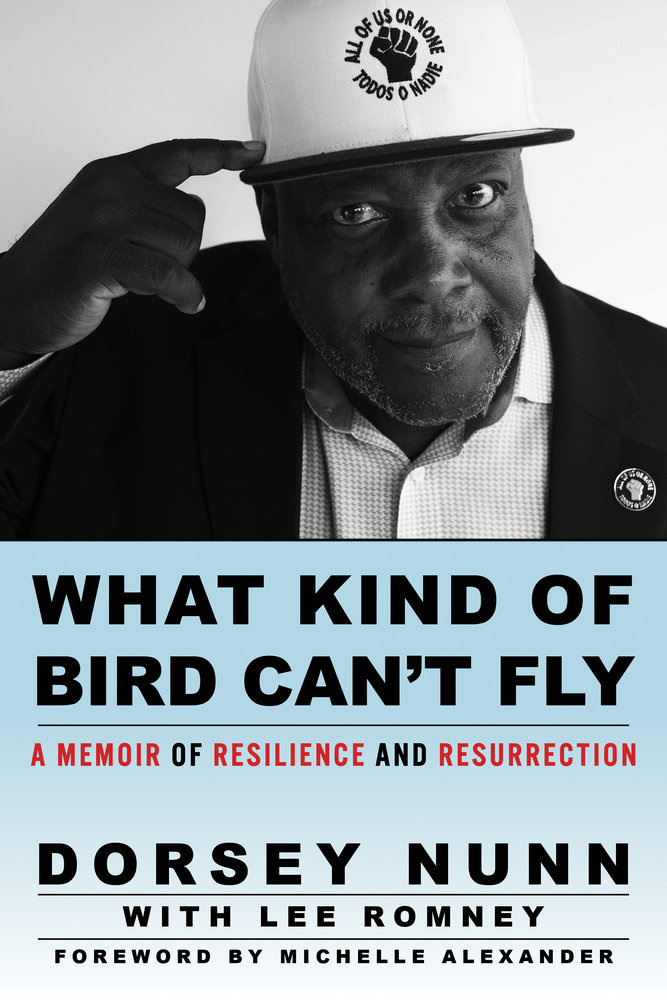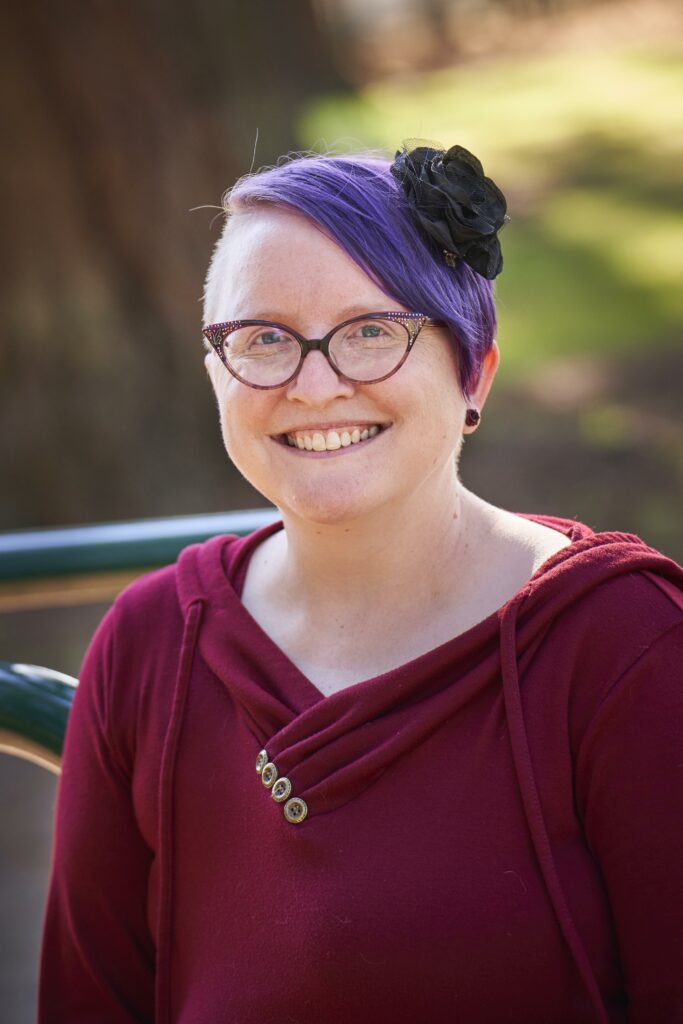Reviewed by Sarah Evans
 Dorsey Nunn never forgot the question a friend asked him on the day he walked out of San Quentin Prison after serving 10 years: “What are you going to do with your newfound freedom?”
Dorsey Nunn never forgot the question a friend asked him on the day he walked out of San Quentin Prison after serving 10 years: “What are you going to do with your newfound freedom?”
The commitment Nunn made that day guided the rest of his life.
“I didn’t answer with words. Instead I lived it,” he writes in his memoir, What Kind of Bird Can’t Fly: A Memoir of Resilience and Resurrection (Heyday, April 2024; co-written with journalist Lee Romney). “I would become an asset to my community and not a liability, and fight for justice for every human being living in a cage or coming out of one.”
Nunn’s 180 is what politicians, courts, law enforcement, attorneys, and community leaders imagine when they talk about “rehabilitation” for people who commit crimes. But it wasn’t the prison system that rehabilitated Nunn — his life changes came in spite of his time inside, not because of it.
“What Kind of Bird Can’t Fly” is simultaneously a seething criticism of America’s incarceration system, complete with firsthand stories about the violence and destruction within prison walls, and a portrait of how a person with the right support system and self-determination can truly change and find redemption. It’s also, as Nunn writes in the preface, an inspiring story about “camaraderie, commitment, and grassroots organizing.”
Nunn walked into prison at age 19, barely able to read, a hot-headed Black teenager from East Palo Alto, California, with a hefty sentence for his part in the murder of a liquor store owner. His first lessons about prison came as soon as he arrived — that the guards would strip him of all dignity, that talking to the wrong person could land him with a beating or time in solitary confinement, and that he would be forced to tamp down his humanity to survive.
His chapters about the violence of life in prison are unfortunately common in memoirs from writers who have experienced incarceration. That doesn’t make them any less powerful or necessary. After all, it was Nunn’s experiences inside that inspired him to dedicate the rest of his life to fighting for justice for others like him.
What makes Nunn’s memoir stand out is the inside look at his subsequent half-century of growth, self-directed rehabilitation, and transformation into one of the loudest voices for change in the criminal justice reform movement.
His self-education started with the men he met inside, some of them imprisoned for their work with the Black Panther Party, who helped him improve his reading and introduced him to “dangerous” books by important thinkers like Mao Tse-tung and incarcerated activist George Jackson. Dunn’s peers engaged him in philosophical discussions about the Black community, the prison community, and how both needed to take action to improve their lives by removing the physical and metaphorical “cages” that society had erected around them.
His education continued with the help of several white allies he met through letter-writing and legal offices who showed him that there were people outside the system who truly cared about those inside it.
When he paroled after 10 years, Nunn quickly discovered that cages continued to pen in people with criminal records, preventing them from obtaining housing, jobs, and other basic necessities. In other words, the things that they needed to stay away from crime were the things that society wouldn’t let them have due to their pasts.
Nunn’s path to sobriety and rehabilitation was rocky. But his dedication persevered, along with the life-saving support of his friends, family, and fellow advocates.
If you have heard of the “ban the box” movement to remove the “have you been convicted by a court?” question and checkbox from employment and housing applications — that movement started with Nunn and his closest friends and activists.
It was one of numerous grassroots movements Nunn was at the center of through his life. One organization he ultimately led, Legal Services for Prisoners with Children, works to improve conditions and opportunities for people who are incarcerated while they are inside and after they parole.
He also founded the policy advocacy group All of Us or None, which fights for human rights by centering the voices and lived experience of people impacted by the incarceration system.
Now well into his 60s, Nunn is nearing the end of his long activism career. “I’m an elder,” he writes, “and even if I will never know how to relax, I understand the importance of passing the torch.” It’s the voice of someone who has run through the fire and not only turned around to fight it, but showed those behind him how to keep the flames from spreading after he’s gone.
Currently and formerly incarcerated people and their families are lucky to have Dunn advocating for them. But everyone can benefit from reading his story. And, hopefully, more will be inspired to pick up that firehose and keep fighting the flames.
 Sarah Evans is an Oregon writer and social justice activist who tries to raise marginalized voices by reviewing books written by and about people of color, women, and those who identify as LGBTQ+. She has an MFA in nonfiction writing from Pacific University.
Sarah Evans is an Oregon writer and social justice activist who tries to raise marginalized voices by reviewing books written by and about people of color, women, and those who identify as LGBTQ+. She has an MFA in nonfiction writing from Pacific University.



Please know that I am grateful for the review. I hope that people will consider sending my book to an incarcerated person. We are aware of our common failures but not our collective successes.
Thx for the review!!!!